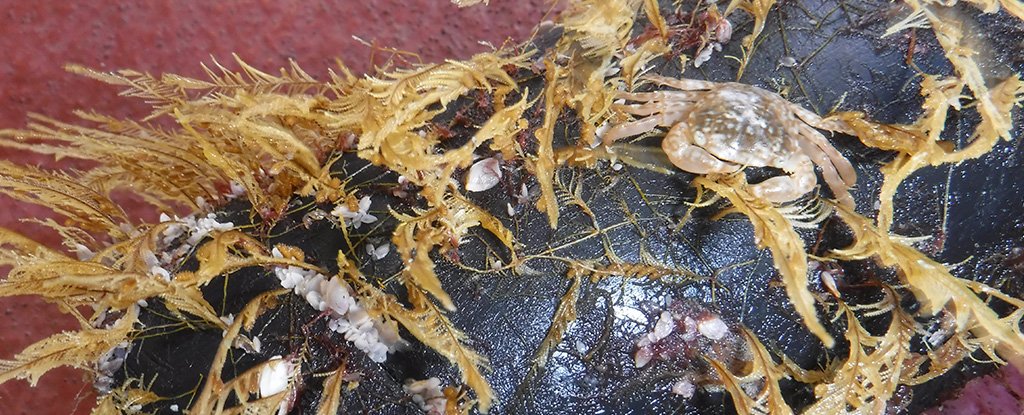
The Great Pacific Garbage Patch is a diffuse haze of garbage located in the North Pacific Subtropical Gyre. The patch of open ocean is estimated to contain 79,000 metric tons of plastic waste.
There are different ideas for how to deal with the environmental disaster. Scientists are starting to realize that a raft of coastal species are beginning to colonize this new plastic habitat.
Linsey Haram is the lead author of a new paper that looks at the marine species that have decided to call the ocean their home.
Haram and colleagues note in their observations that a shift in the composition of the ocean's invertebrate species is underway, with the emergence of an increasing diversity of coastal species that are able to occupy these plastic rafts.
These communities include species of anemone, hydroids, and shrimp-like amphipods. The team calls these new communities neopelagic, meaning "new" and "pelagic", as opposed to coastal.
Small organisms that attach themselves to the top or underside of the ocean's surface film were the norm in the past. They live on floating logs, seaweed, and other marine animals.
The arrival of these new coastal organisms could disrupt an already delicate and lacking in resources.
Haram says that the coastal species are competing with the oceanic rafters. They are competing for space. They are competing for resources. The interactions are poorly understood.
Scientists have known for a long time that the dispersal of coastal and continental species across large ocean distances can be accomplished with the help of rafts. This process is thought to be the reason for the colonization of the Galapagos.
The nature of the objects made this rafting a fleeting process. Plastic rafts provide a permanent home for coastal species to transit ocean basins and colonize on the open ocean, because of the large-scale human introduction of plastic into the environment.
The introduction of these new coastal species into the open ocean represents a paradigm shift in the understanding of marine biogeography. The vast tracts of open water have long been considered to be a physical and biological barrier for the dispersal of species, with the exception of sporadic climate events that cause the creation of more rafting opportunities.
The authors of the paper note that suitable habitat now exists in the open ocean and coastal organisms can both survive at sea for years and reproduce, leading to self-sustaining coastal communities on the high seas.
The existence of self-sustaining coastal marine communities on the open ocean could provide these species, and other marine species, with a stepping stone environment before propagating into new coastal habitats. Haram and her colleagues are concerned that a host of new environments may become susceptible to invaders.
The other coastlines are not just urban centers. Senior SERC scientist Greg Ruiz, who heads the marine invasion lab, says that there is more opportunity in more remote areas.
Haram notes that there are many unanswered questions and that more research is needed to learn more about the neopelagic ecosystems.
What is the extent of the diversity of coastal species at sea and how often do coastal species co-occur with neustonic species on plastic rafts?
The authors state in the paper that they need to know how much neopelagic communities self-sustain or need continued input from coastlines.
Understanding the host of abiotic factors that are likely to affect the success of coastal communities is important. How does a plastic bottle that may have been lost from a fishing vessel differ from a buoy that came loose from an aquaculture facility?
One thing is certain. As human demand and production of plastic increases, scientists estimate cumulative global plastic waste could reach over 25 billion metric tons by 2050, and plenty of opportunities for coastal species to take their maiden voyage out to sea will continue to present themselves.
The study was published in a journal.
The crab and barnacles are colonizing a piece of floating debris.
